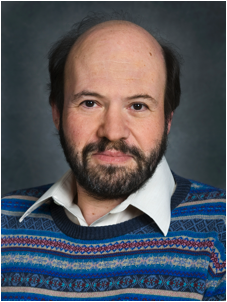 I joined the ALS family in 2007, filling the newly created position of ALS Division Deputy for Engineering. Because a large percentage of ALS staff are part of the Engineering Division, this position was created to establish shared management in the two divisions to ensure better integration and coordination between engineering and non-engineering ALS staff.
I joined the ALS family in 2007, filling the newly created position of ALS Division Deputy for Engineering. Because a large percentage of ALS staff are part of the Engineering Division, this position was created to establish shared management in the two divisions to ensure better integration and coordination between engineering and non-engineering ALS staff.
My natural connection to the ALS is as a detector developer—after all, what you get is what you see. A 2005 strategic LDRD-funded initiative nucleated a virtual detector group, consisting of members of the Integrated Circuit Design and Electronic Systems groups in the Engineering Division, in collaboration with the Microsystems Lab with support from members of the Physics Division. This team developed a prototype fast direct-detection CCD that has been used both to explore new concepts and to enable experiments at the ALS, APS, and LCLS. Based on that work, we received ARRA funds to develop megapixel frame-store (electronic shutter) detectors reading out at 200 frames/second. Eight of those systems, as seen in the photo on the right, will be delivered to the ALS next year.
This virtual detector group has continued to grow, and in addition to the detector itself, we have also developed high-speed data acquisition and processing electronics capable of in-line firmware data processing. High-speed readout enables dynamics, simultaneous position/energy detection, and simple efficiency, but it generates huge volumes of data. A growing challenge will be to develop effective strategies for dealing with the massive amount of data resulting from high-speed readout.
With funds from the BES Accelerator and Detector R&D program, the team is developing even faster detectors (approaching 10,000 megapixel frames/second) while improving direct detection soft x-ray (and electron) performance.
Presently, my time is spent helping to plan for a Next Generation Light Source. The scientific and technical case that Berkeley Lab put forward for a high-repetition-rate x-ray free-electron laser array has resulted in a broad national consensus on the need for such a facility, and many of us continue to vigorously pursue R&D on key technical challenges in order to be ready as soon as a project is formalized.